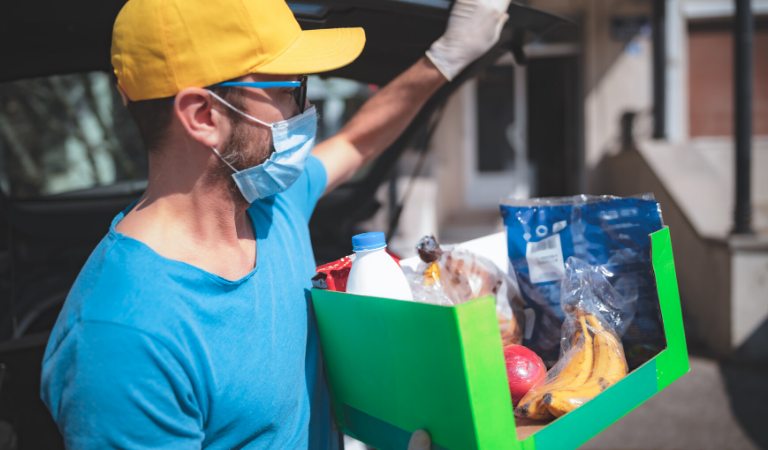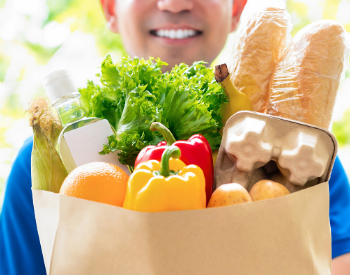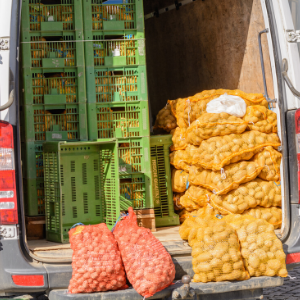When restaurants were forced to shut down dine-in services due to COVID-19, many of them converted into food markets. Restaurateurs discovered that grocery staples were in high demand and grocery stores were struggling to keep up. The majority of establishments nationwide have had success in offering grocery items to customers during the pandemic.
However, with coronavirus cases beginning to level off and businesses reopening their dine-in services,
should restaurants continue to sell grocery products? In this informative guide, we provide you with
details on why your business should continue offering groceries after coronavirus.
Can You Be A Food Market, Still Sell Meals To Go, And Maintain A Full-Service Restaurant?
Before COVID-19, very few restaurants were selling customers grocery staples and meals to go while running a full-service establishment. With the success many restaurants have had offering groceries during the pandemic, some want to continue being a one-stop location for customers. To properly run a full-service establishment and act as a food market, there are a few things you should consider doing.
Create A Plan
With dine-in services coming to a halt during COVID-19, staff members were able to focus on packaging and delivering grocery products. However, with dine-in services reopening, it’s essential that you come up with a plan on how you want to handle operations.
When creating a plan, strongly consider having some of your employees solely working to fulfill customers’ grocery orders instead of waiting tables or preparing meals. Your goal should be to prevent staff members from wearing different hats to minimize mistakes. Having a plan also allows staff members to fully understand their responsibilities and increases productivity.
Keep It Simple
With your business reopening its dine-in services, you’ll start ordering more ingredients and supplies to prep meals which means there will be less storage space to stock grocery items. This makes it important to keep your selection of grocery staples simple.
Since your grocery delivery service has been operating for quite some time now, check your inventory to see which items have not been selling. For instance, if you notice that customers aren’t purchasing spices, simply remove them from your grocery menu. Limit your menu to grocery staples that patrons are consistently ordering to prevent food waste in your establishment.
Make Prices Competitive
With grocery stores beginning to restock their shelves with grocery staples, it’s crucial to make your prices competitive to attract customers. Do research on the costs of grocery staples at nearby grocery stores before setting your prices. Although it’s convenient for patrons to order meals and groceries in one location, setting your prices too high will force them to purchase basic essentials elsewhere.
Should Restaurants Continue To Sell Groceries After Coronavirus?
Offering grocery staples to customers provided restaurants with a simple and effective way to generate income and stay open for business when stay-at-home orders were in place. However, as state and local regulations allow foodservice establishments to operate at maximum occupancy again, restaurants should strongly consider continuing to sell groceries.
Although your dine-in services may be open, it’s likely that many patrons will not feel safe eating out at first. Customers are likely to continue practicing social distancing and avoiding public places until they feel ready. This will cause your restaurant sales to not be the same as before COVID-19, making it crucial to make up for the loss in profits.
Continuing to operate as a food market after coronavirus is an excellent way for your business to generate additional revenue. Patrons have grown accustomed to the fact that they can order both meals and groceries for delivery from your establishment. They will likely continue to purchase basic essentials from your business because it’s convenient and saves them a trip to the grocery store.
Where Do Restaurants Purchase Grocery Staples From?
Business owners can order grocery items directly from the food distributors they purchase their restaurant’s produce, dry goods, meats, and other basic essentials from. Food vendors have the majority of basic essentials customers look for at grocery stores and sell them to establishments in bulk. This allows you to package grocery items in a variety of individual bundles for customers. Simply use the deli bags, zip bags, take out boxes, and other supplies you frequently receive from vendors to repackage grocery products in smaller, consumer-friendly portions.
Why Are Restaurants Selling Groceries?
With dining restrictions slowly being lifted across the country, establishments continue to act as independent grocery stores. A number of business owners have realized that they can easily flip the ingredients, produce, dairy products, and other grocery items they receive from vendors for money. They’ve noticed that customers love the convenience of buying dinner and groceries in one location and believe that patrons will continue to take advantage of that after coronavirus. Offering grocery staples also provides foodservice establishments with a way to produce additional profits to help offset revenue losses due to COVID-19.
The Future Of Restaurants
The COVID-19 crisis forced business owners to get creative in order to keep their doors open. Many restaurateurs chose to convert their establishments into food markets and realized that many customers welcomed the idea. With dining restrictions being lifted nationwide, a number of restaurants are planning to continue to act as a food market. It provides them with a way to generate additional profits to offset revenue losses due to the coronavirus. If you are also looking to continue selling grocery staples, just remember to create a plan, keep your grocery menu simple, and make your prices competitive.






